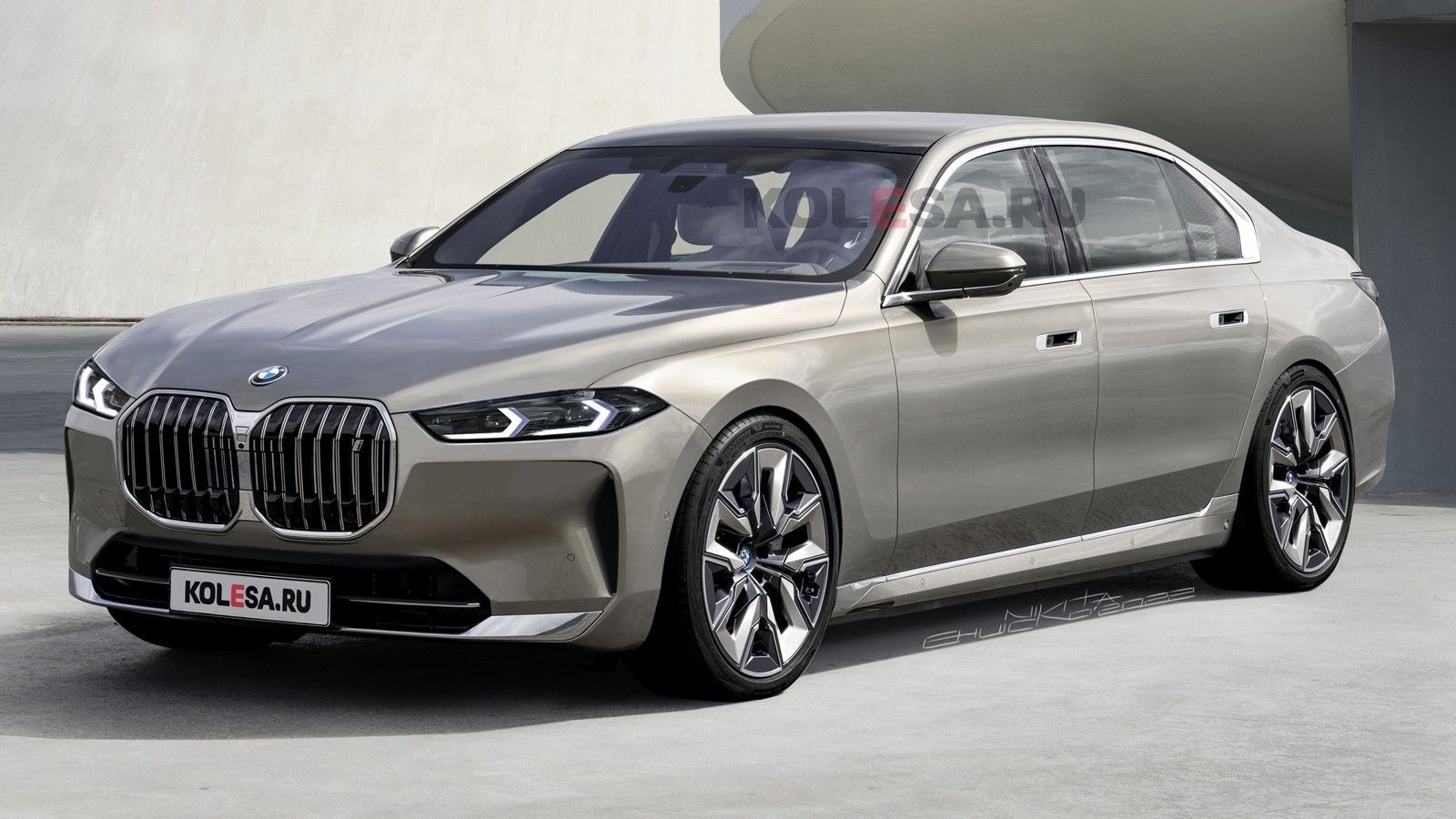The luxury cinema on wheels, that is the new 2023 BMW 7 Series, is nothing if not controversial. Its front-end design is so polarizing that it falls into the love-it or hate-it category with absolutely no middle ground. Naturally, keyboard warriors and digital artists have been going crazy since the new 7 Series was revealed, and now we’ve come across a rendering that actually does the 7 Series a bit of justice. So, would it look better without the split headlights? Actually, yes it really would.
BMW 7 Series by Kolesa – Fixing What’s Broken…or Isn’t
The front end of the BMW 7 Series is something else, and despite the fact that BMW actually held off on this grille design for more than two decades, the day has finally come. The new 7 Series is as polarizing as it can be, but what is it that makes it so polarizing? Is it the tall and wide grille design, the weird split headlights, or just the fact that the nose is so very tall? Well, as it turns out, the split headlights seem to lead to all the funkiness that, well, 70-percent of the global population can’t seem to get over, and this digital design by Kolesa proves it.
To start with the nose is now void of the split headlight design, with the car taking on more traditional headlamps with BMW’s instantly recognizable and signature DRLs. The bumper has also been slightly redesigned with more traditional, larger air intakes and a mildly enlarged air dam. The kidney grilles are a bit smaller, and thanks to the new front elements, the hood, and the fenders had to be reshaped just a bit.
note: 2023 BMW 7 Series shown here
Outside of these modes and the slightly lowered suspension, the car you see in this design is pretty much the same as what BMW released. This includes an identical side profile, door handles, mirrors, side skirts, and the entire rear end. The rear end could use a few tweaks of its own if you ask most, but what do you think about the digital redesign. I suppose a lot of folks would argue that this is what the new 7 Series should have looked like or, at the very least, what we all expected it to look like, anyway.
It’s already being said that, like the 4 Series, the new 7 Series is a lot more attractive in person than it is in press photos, so it’s possible that the design could grow a bit on everyone. Some people never shut up about the 4 Series and M4 but, eventually, the hype died down. We’ll know for sure sometime later this year, with the new 7 Series scheduled to land at U.S. dealers before the end of 2022. There will be three different models available at launch: the 740i, 760i, and – of course – the i7.
The 740i is powered by a 3.0-liter inline-six with 380 horsepower and 398 pound-feet of torque. The mild-hybrid technology adds in an additional 18 ponies and 147 pound-feet for short bursts. The 760i, on the other hand, is powered by a 4.4-liter, twin-turbo, V-8 that delivers 544 horsepower and 553 pound-feet of torque. It has the same 48-volt hybrid system as the 740i, though, it doesn’t add any extra boost that we’re aware of. Finally, there’s the i7 xDrive 60, which has a 101.7-kWh battery pack, two electric motors, and a total system output of 536 horsepower and 549 pound-feet of torque.
Down the road, there will be an M760e xDrive PHEV with 563 horsepower and 591 pound-feet of torque while the i7 M70 xDrive will see power output bump up to 597 horsepower and 737 pound-feet of torque. The question is whether or not the overall design of the 7 Series will really grow on people or if it’s actually meant for the small percentage of people that have the means and will actually buy it. After all, that small crowd is what this design caters to.

